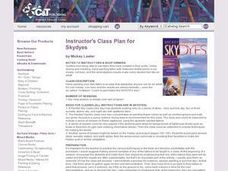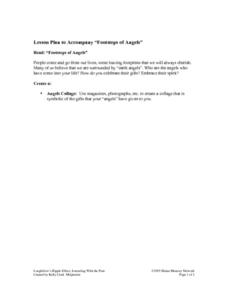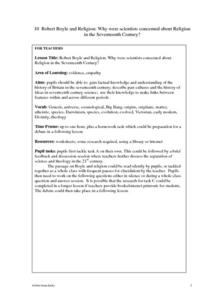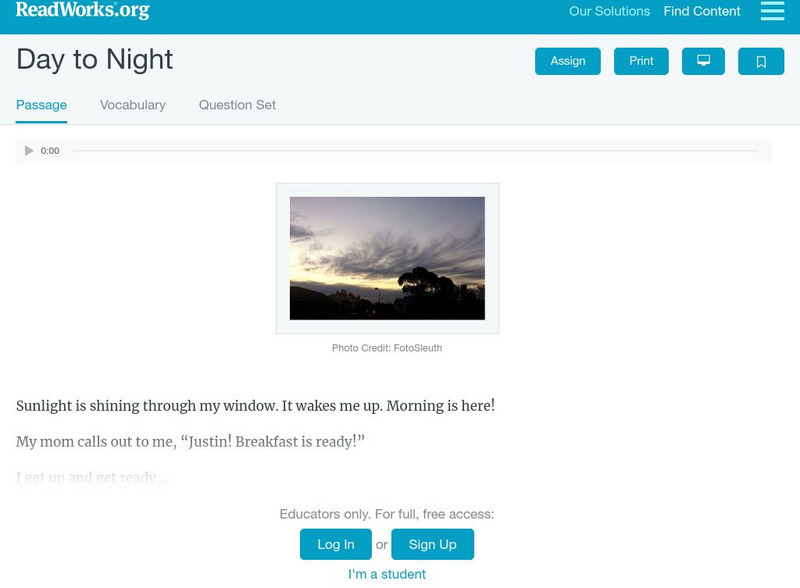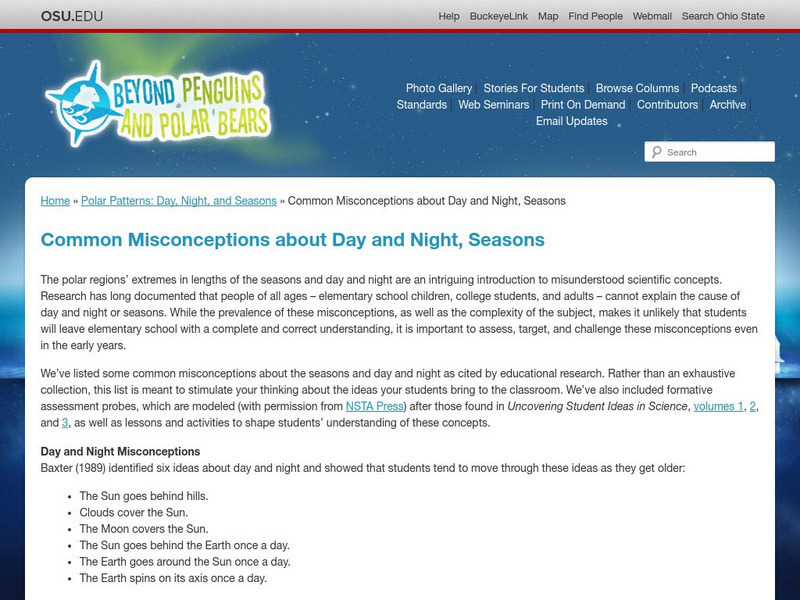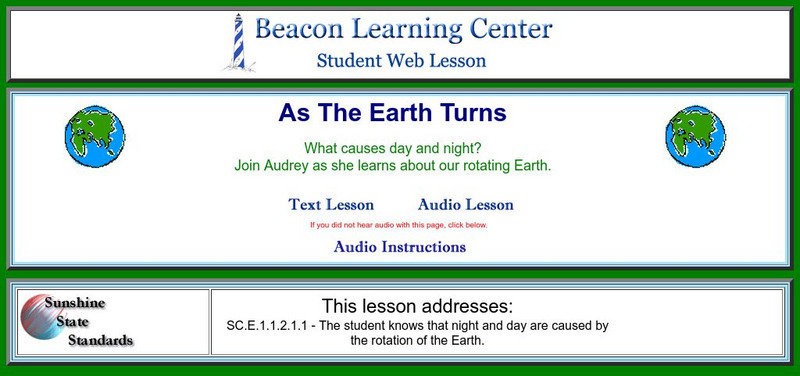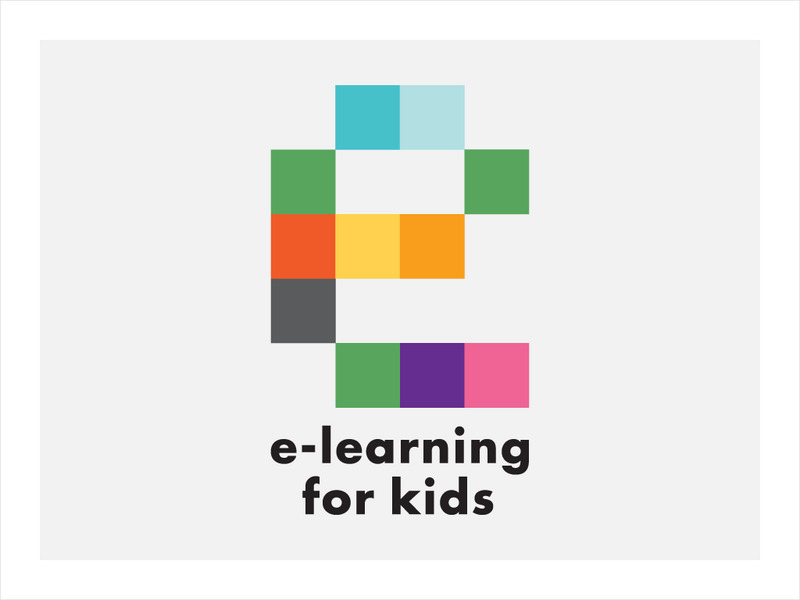Curated OER
SKYDYES
Students use fabric they have created in their quilts. Unlike dyeing and marbling, hand-painting fabric with Setacolor textile paints is not messy, not toxic, and the serendipitous results make every student feel like an artist!
Curated OER
"Footsteps of Angels"
Students read poem, "Footsteps of Angels," by Henry Wadsworth Longfellow, discuss angels in their lives, and create angel collages using magazines, photographs, etc., symbolizing gifts their angels have given to them.
Curated OER
The Four Seasons with "Charlotte's Web"
Students explore the characters and plot of the story, "Charlotte's Web" through the twenty-two lessons of this unit. Characters, facts, and details of the story are recalled and discussed and form the basis of several activities in this...
Curated OER
The Olympics Return Home
Students compare the ancient Olympic Games with the modern version of the event. They study the history of the Games and observe how they have changed through time.
Curated OER
Bats Migrate South
Students examine the life of bats in Illinois. Using the internet, they research the history of the bat in Illinois and describe the way they find prey by using echolocation. They report their findings to the class and answer any...
Curated OER
Robert Boyle and Religion
Learners discuss past cultures and the history of ideas in seventeenth century science. They answer a list of questions and prepare for a debate on the subjects of science and religion and views on how the universe was created.
Science Education Resource Center at Carleton College
Serc: Investigating Rotation: Why Is There Day and Night?
In this rotation activity, students investigate what causes day and night by participating in a classroom activity. Students will observe, question, and investigate how the relationship between the earth and sun causes day and night.
E-learning for Kids
E Learning for Kids: Science: Atlantic Ocean: Day and Night
This module explores day and night. Learn about what we see during the day and night and why we see what we see.
Read Works
Read Works: Day to Night
[Free Registration/Login Required] A literary text about a typical day in the life of a boy named Justin. A question sheet is available to help students build skills in reading comprehension.
Science Buddies
Science Buddies: Kinesthetic Astronomy: Longer Days, Shorter Nights
This kinesthetic activity demonstrates to students that the Earth's tilt is what is responsible for shifting light patterns and the change in seasons.
Other
Center for Science Education: Eye on the Sky: What Makes Day and Night?
This activity will allow you to model day and night cycles. A rotating student holding a map (provided) models the earth. A lamp is used to model the sun. Numerous worksheets (pdf) and additional website resources are also provided.
Ohio State University
Beyond Penguins and Polar Bears: Common Misconceptions About Day and Night
Misconceptions about the causes of seasons and day and night are common through all ages. Use the information on this site to help your students understand these concepts. Included are links to many resources and lesson plans for...
E-learning for Kids
E Learning for Kids: Science: France: What Makes Day and Night?
Papa and his son Pierre work at a grape farm. Pierre loves to go out and play as soon as the sun comes up. What do you know about the sun and the Earth?
Science Struck
Science Struck: A Scientific Explanation to What Causes Day and Night
Explains how the rotation and the axial tilt of the Earth are responsible for the phenomenon of day and night. Provides information about the Sun, the solar system, and the Earth, and how the circumference of the Earth was first measured...
Utah Education Network
Uen: Trb 3:1: Investigation 4: Day and Night
A lesson for third graders in which they learn about the rotation of the Earth on its axis and how this movement creates day and night. They also examine the orbit of the moon about the Earth and the Earth's orbit around the sun.
BioEd Online
Bio Ed Online: Sleep and Circadian Rhythms
The following lessons help students from grades 6-8 understand sleep and circadian rhythms. Lesson topics iinclude: day and night, seasons, sundails, clocks, sleep and sleep patterns and sleeping in space.
Utah Education Network
Uen: Earth and Moon Observations
Earth's revolution, rotation, tilt, day and night cycle, and the sun's apparent movement across the earth are explored.
Beacon Learning Center
Beacon Learning Center: As the Earth Turns
Join Audrey on her learning adventure as she discovers how the Earth's rotation causes day and night.
CK-12 Foundation
Ck 12: Fifth Grade Science: Earth Science: Earth's Motion in Space
[Free Registration/Login may be required to access all resource tools.] Discusses the motion of the Earth with its day and night cycle, the seasons, the Earth's orbit around the Sun, and its year-long cycle.
ClassFlow
Class Flow: Earth and Space Day and Night
[Free Registration/Login Required] This flipchart illustrates a view of the earth from space and how day and night happens.
ClassFlow
Class Flow: Day and Night
[Free Registration/Login Required] In this flipchart students will understand how the Earth rotates during a 24 hour period giving us day and night.
E-learning for Kids
E Learning for Kids: Science: Center of the Ocean: The Sun, the Earth, and the Moon
Nita lives on Coco Island in the Indian Ocean, and is learning more about the Sun, the Earth, and the Moon. Join her and learn about day and night.
Project Britain
Primary Homework Help: Earth and Space Quiz
This resource provides information about Earth and space. In addition, there is a quiz provided.
BBC
Bbc Schools: Ks2 Bitesize: Science: Physical Processes: Earth, Sun, and Moon
Help Sarah Jane and her team put the solar system's planets back in order. Following the activity, read more about the sun, the Earth, and its moon, and then take a quick quiz to check for understanding.


